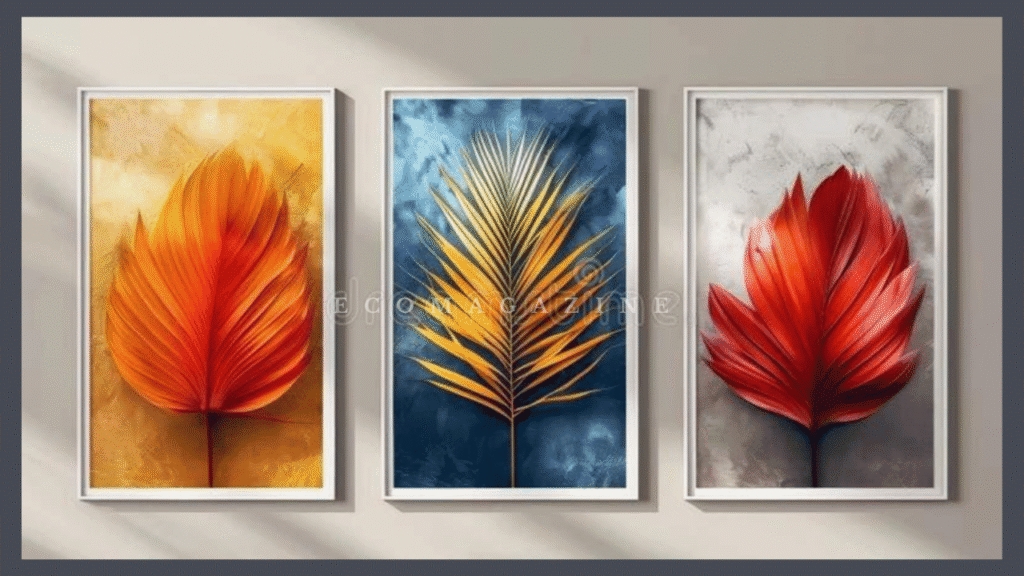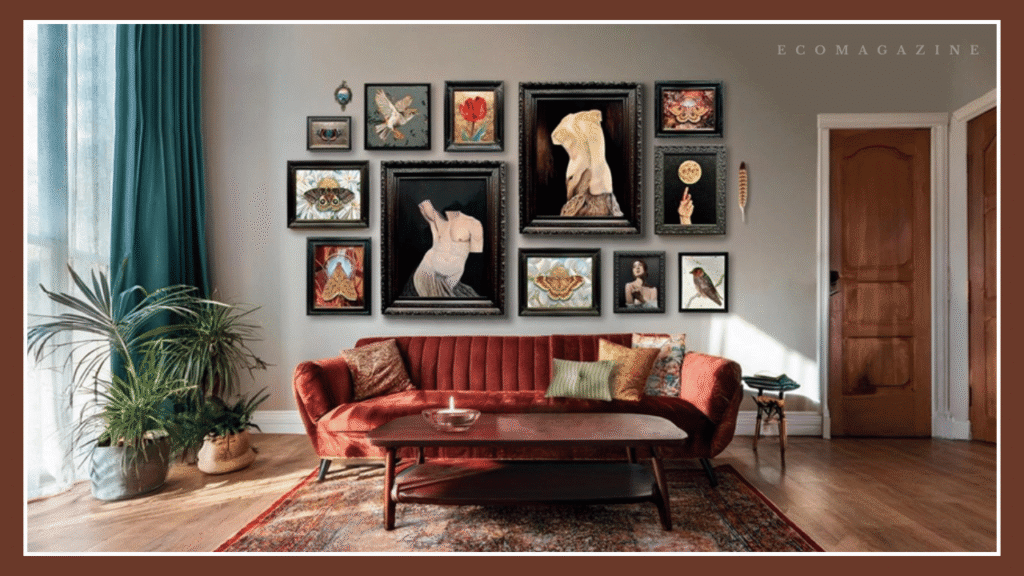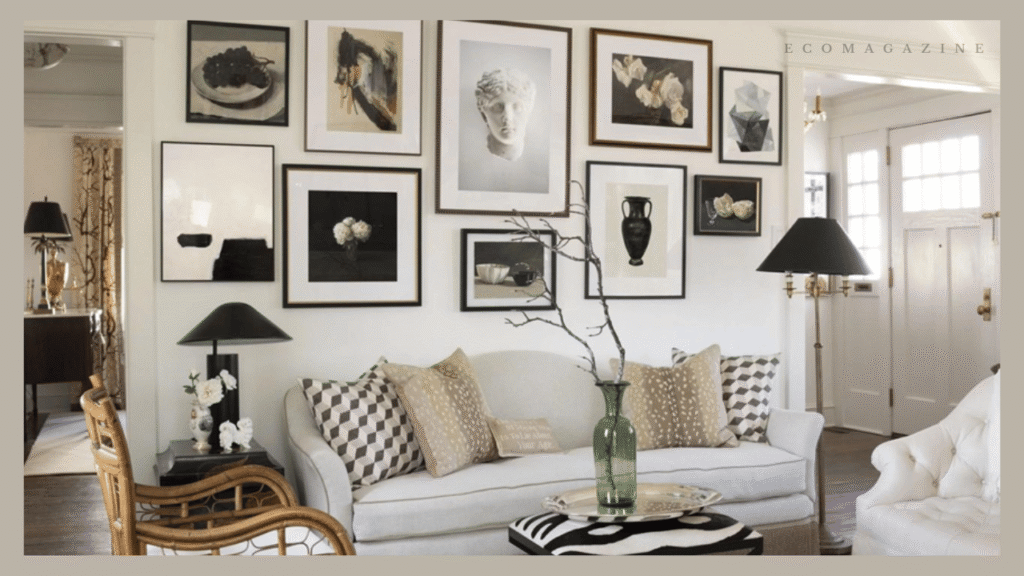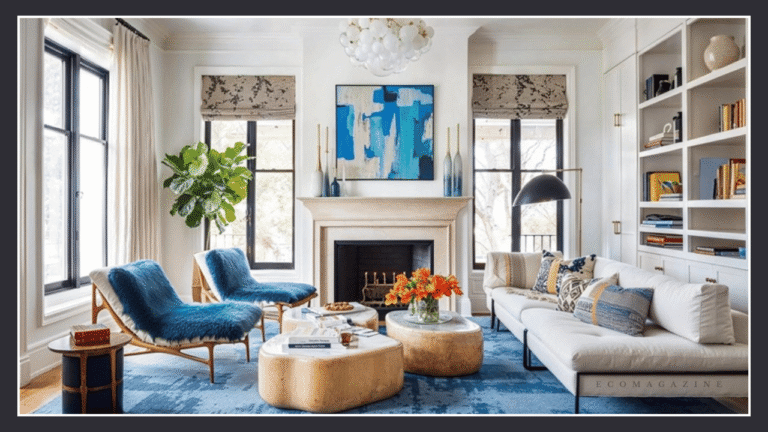Wall art does far more than fill empty walls; it transforms your living room into a reflection of your personality. A carefully curated space tells a story through the pieces that surround you. The artwork you select becomes part of that story, infusing the room with character and emotion.
The right piece of living room art sets the tone and defines your style. It can make the space feel more open and inviting or warm and intimate. Through color, texture, and form, art has the power to inspire, energize, and shape the atmosphere for everyone who enters your home.
Modern artwork offers endless opportunities to refresh your space while expressing individuality. Bold, colorful designs can command attention and spark conversation, while softer, more muted tones help create a serene, relaxing environment.
In this guide, you’ll discover how to choose artwork that truly elevates your living room. Learn how to select styles that complement your home, find inspiration through creative color pairings, and apply designer tips to showcase art in ways that make a lasting impression.
Why Wall Art Matters in the Living Room
Living rooms play many roles in our homes. We use them to entertain guests, spend time with family, watch TV, and sometimes they become spots to eat or catch a nap. This multifunctional space deserves special attention to build an environment that works for everything while showing off who you are.
Sets the tone and mood of the space
Wall art does much more than just decorate your living room—it shapes how people feel when they walk in. Research shows that the right wall art placement can boost feelings of environmental satisfaction by up to 60 percent. The way art affects people’s emotions is remarkable. Different colors and themes trigger specific feelings that change how everyone experiences the room.
Blues in wall art bring peace and help people relax, while yellows capture the sun’s warmth and spark happiness and creativity. Green shades bring nature’s balance inside and make living spaces feel fresh. Rooms meant for socializing benefit from vibrant, dynamic pieces that get people talking.
Your wall art’s mood decides if your living room feels energetic, peaceful, thoughtful, or dramatic. The effects reach beyond emotions—lighter, cooler colors make rooms look bigger, while darker shades add warmth and coziness.
Acts as a visual anchor or focal point
Every well-designed living room needs something that catches the eye and creates structure. Wall art naturally becomes this vital visual anchor. Large living rooms without a focal point can feel scattered and disorganized.
Bold wall art on an accent wall helps create the visual structure you need. The main piece gives eyes a natural path through the room, which makes everything feel organized. This anchor point also helps connect your furniture, color choices, and decorative pieces.
Open floor plans benefit from wall art that helps separate different areas. A big statement piece can reshape the scene, guiding furniture placement, lighting choices, and even the smaller decorative touches you add.
Types of Wall Art That Transform Living Rooms

The right wall elements can completely change how your living space feels and functions.
Designers use these artistic choices to elevate ordinary rooms into inspiring, expressive environments:
- Paintings and framed prints: Classic pieces like yellow artwork bring warmth and energy to a room while instantly refreshing its look. Paintings and prints can easily evolve with your style, and when chosen with complementary colors, they tie your décor together beautifully. Matching frames or coordinated matting help create a unified gallery feel even when mixing different art styles.
- Photography and gallery walls: Combine photos and artwork to form a striking focal point. Personal touches—family portraits, travel memories, or favorite prints—add depth and authenticity to your space. Keep about three inches between frames to prevent crowding and place the largest piece slightly off-center for visual flow.
- Sculptural and 3D wall art: Add movement and dimension with textured elements like wood panels, metal sculptures, or relief paintings. These pieces play beautifully with natural light, creating soft shadows that shift throughout the day for an ever-changing visual effect.
- Mirrors and reflective pieces: Use mirrors to amplify light and make your room appear larger. Position them across from windows or above furniture to maximize reflection. Choose from modern minimalist shapes or ornate antique frames to match your desired aesthetic.
- Textile and woven wall hangings: Introduce warmth and texture with macramé, vintage textiles, or fiber art. These soft, tactile pieces balance sleek surfaces and can either stand alone or blend into a mixed-media gallery wall.
How to Choose and Place Wall Art for Maximum Effect

Choosing and arranging wall art takes more than simply picking pieces you like. Strategic placement and thoughtful coordination can completely change how your living space feels.
Follow these design tips to make every wall work beautifully:
- Match scale with wall size: Artwork should fill about 60–75% of the wall’s width for balanced proportions. Hang the center of your piece at eye level (57–60 inches from the floor), or leave 6–12 inches of space above furniture for a polished, cohesive look.
- Balance color with existing decor: Align your artwork’s colors with your room’s palette to create visual harmony. Bold, vibrant pieces stand out beautifully in neutral spaces, while softer designs complement more colorful rooms.
- Use symmetry or asymmetry strategically: Matching pieces on each side of a wall create a refined, structured aesthetic. Asymmetrical layouts introduce creativity and flow. For gallery walls, start with your largest piece slightly off-center and build outward for natural balance.
- Add a personal creative touch: Incorporate artwork that represents your personality and passions. Consider crafting your own masterpiece with one of the best custom paint by number kits to create something meaningful and distinctive. These personal additions make your home feel authentic and truly yours.
Room-Specific Wall Art Tips from Designers

Designers agree that placing wall art correctly can completely change the feel of a room. Each area of your living space offers its own opportunities to showcase art beautifully. Use these expert tips to create balance, highlight key features, and enhance your home’s overall atmosphere:
- Above the sofa: Choose bold or wide pieces that cover about two-thirds of your sofa’s width to create visual balance. Hang the artwork 6–8 inches above the top edge for a natural flow. Large statement pieces or coordinated sets with matching frames or colors work best for this focal point.
- Near windows: Select art that enhances natural light. Use non-glare acrylic covers to prevent reflections, and consider adding mirrors across from windows to amplify brightness. Art near windows can also add a sense of privacy without blocking the view.
- On narrow walls: Opt for tall, vertical artwork or stacked arrangements to make the space feel taller. Clean lines, abstract designs, and vertical botanicals create visual lift and make narrow hallways or alcoves feel more open.
- In open layouts: Use wall art to define separate areas while maintaining an airy, connected look. Choose pieces that share similar colors or themes to create visual harmony across the space and distinguish zones within open-concept rooms.
The Art of a Lasting Impression
A living room filled with meaningful art becomes more than a decorated space; it becomes a reflection of life, emotion, and creativity. The pieces you display tell your story through color, texture, and movement, turning blank walls into expressions of who you are.
Designers agree that the most beautiful rooms are not defined by furniture or trends but by the art that gives them identity. Every brushstroke, photograph, and sculpture adds depth and feeling to the space. Even small details—like how light touches a canvas or how a painting complements nearby textures—can redefine the mood of the entire room.
In the end, the best living rooms are those that feel alive. Choosing pieces that resonate with your personality and values will ensure your walls tell stories that inspire, comfort, and spark conversation for years to come.


